Ever hear the expression, jack of all trades, master of none? It essentially means that a generalist can do everything decently, while a specialist does one thing extremely well. The same holds true when you’re selling online.
Carving out a niche market and positioning yourself as the go-to brand for a specific audience not only establishes your credibility over competing generalists but also results in a more focused business, from your unique value proposition to your content marketing, that makes it easier for the right customers to say, "This is for me."
If you’re racking your brain trying to think of your first product idea, starting with a niche is a great place to begin. There are countless niches you can pursue, with the opportunity to niche down even further. The key is to identify a niche market that you can master and has a viable audience of customers.
Below, we’ll go over what a niche market is, how to identify one and find in-demand products to serve it, plus eight niche market examples (including niche product ideas) that are ripe for new players.
Table of contents
A definition: What exactly is a niche market?
A niche market is a segment of a larger market that can be defined by its own unique needs, preferences, or identity that makes it different from the market at large.
For example, within the market for women’s shoes are many different segments or niches. Shoes for vegan women would be a niche market, as would shoes for plus-sized women, shoes for nurses, and shoes for transgendered people. These are all niche markets within the larger market for women’s shoes.
Nearly every market can be further refined, or divided, by the particular needs and preferences of its constituents. Some of the most common ways to define a niche are based on:
- Price (e.g. luxury, moderate, discount)
- Demographics (gender, age, income level, education level)
- Level of quality (premium, handmade, economical)
- Psychographics (values, interests, attitudes)
- Geographics (residents of a certain country, city, or even neighborhood)
Choosing to focus on a niche is a strategic business decision to serve a certain customer base better than competitors who target the larger market.
Let's take a look at some examples.
8 niche market examples (and niche products you can sell)
While you might have specific trending product ideas already in mind, you can increase your odds of success by starting with a niche market and then drilling down to find niche products with a possible market-fit. Here, we’ll explore eight larger markets to show you how they each contain their own niche markets and product opportunities.
Keep in mind this list of niches and product ideas for 2019 is simply a place to start your search for a niche market—you can always go in a completely different direction or find other niche opportunities within each category.
1. Conscious consumers
Sustainability has become a hot topic among consumers of late. According to a survey by Neilson, 48% of U.S. consumers say they would “definitely” or “probably change” their consumption habits to reduce their impact on the environment.
The rise of the conscious consumer has paved the way for vegan, eco-friendly, and cruelty-free variations of conventional products. If there is a product that is frequently purchased by the mass market, there is likely a niche of conscious consumers that will embrace a greener alternative.
In the past, companies looking to appeal to this niche market might donate a portion of proceeds to a cause, but now most consumers care about how the products are sourced and produced as well.
Bee’s Wrap, for example, is looking to replace plastic wrap with options made from beeswax. The natural alternative to food storage is not only environmentally friendly, but also more cost-effective for consumers because they’re reusable.
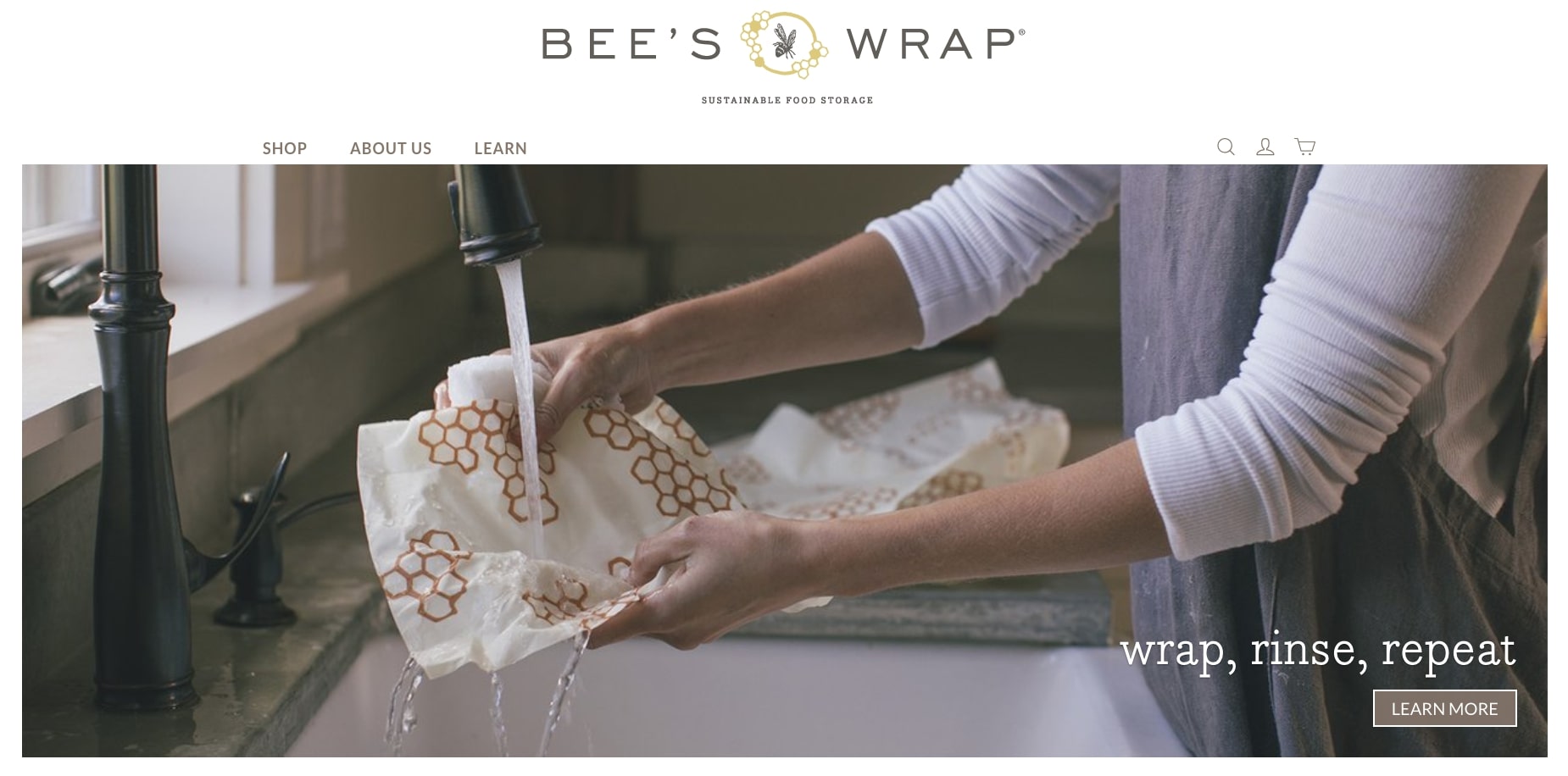
More niche product ideas for conscious consumers
- Reusable drinking straws
- Cruelty-free cosmetics
- Vegan-friendly apparel
- Menstrual cups
2. Pet owners
Total expenditures for the pet industry in the U.S. alone is an estimated $75.38 billion in 2019. There’s a lot of opportunities to develop a niche within this market, across different types of pets, lifestyles, and more.
Patricia’s Couture has carved its own niche in this market—they sell personalized kaftans, pillows, pajamas, blankets, and other items you can plaster your beloved pet’s picture on. 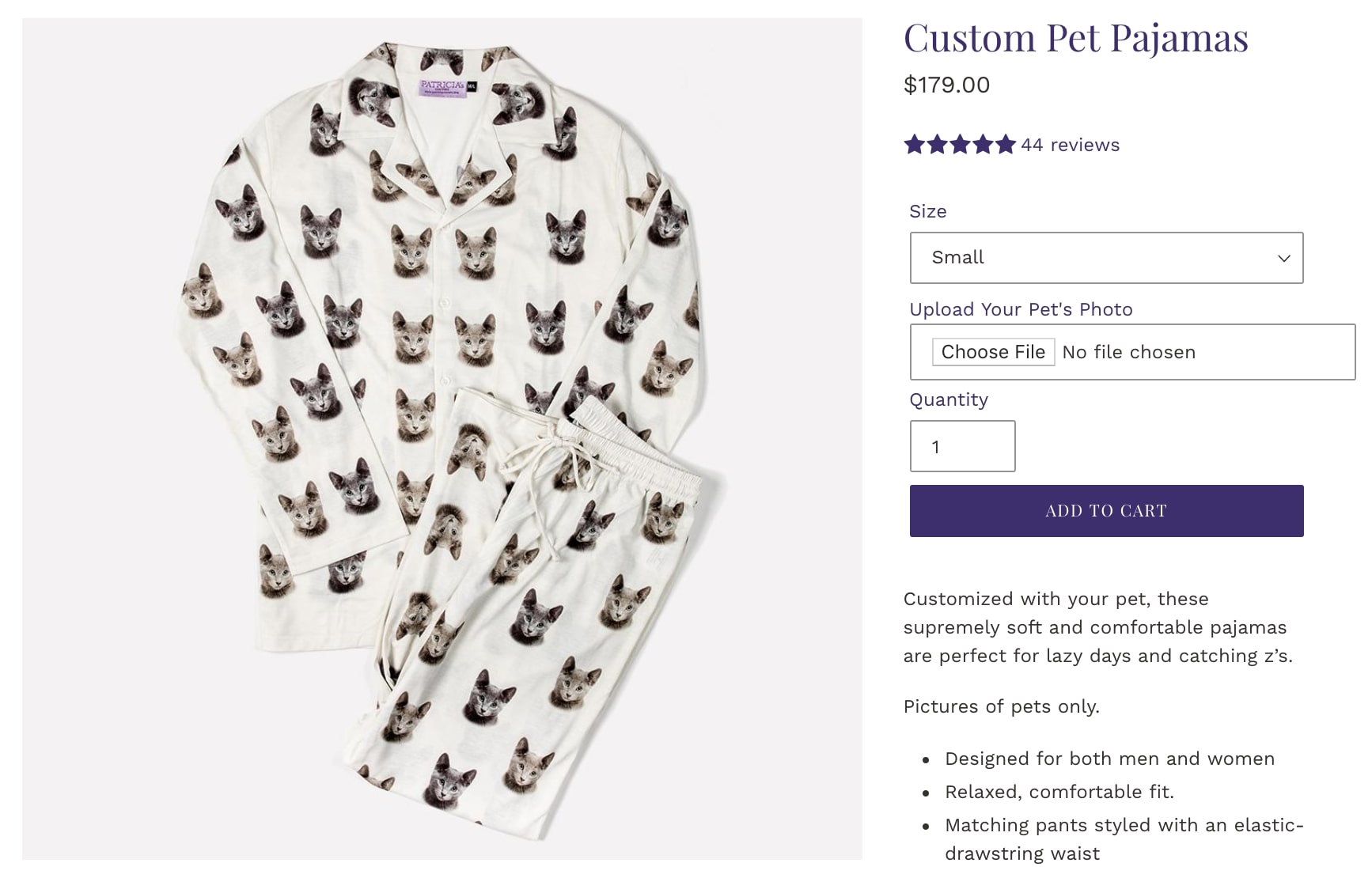 While most people own fish, dogs, or cats, there are also unique pets like horses, lizards, turtles, and even chickens, each with their own potential opportunities.
While most people own fish, dogs, or cats, there are also unique pets like horses, lizards, turtles, and even chickens, each with their own potential opportunities.
More niche product ideas for pet owners
- Pet cameras to watch and interact with pets while you’re not at home
- GPS pet trackers
- Personalized products with pets’ photos
- Organic pet food and treats
- Pet accessories and clothing
3. The LGBTQ+ community
The LGBTQ+ community is huge, and these consumers have unique shopping habits. Per Nielsen, they go shopping 10% more than the average American consumer—and they’re also willing to spend about 7% more.
Brands who make authentic connections with this market are in the best position to serve this niche. Just ask TomboyX, an underwear brand that started in this market. Originally a T-shirt brand, co-founder Fran Dunaway saw the opportunity to hone in on a specific consumer group’s needs to sell underwear “for any body”.
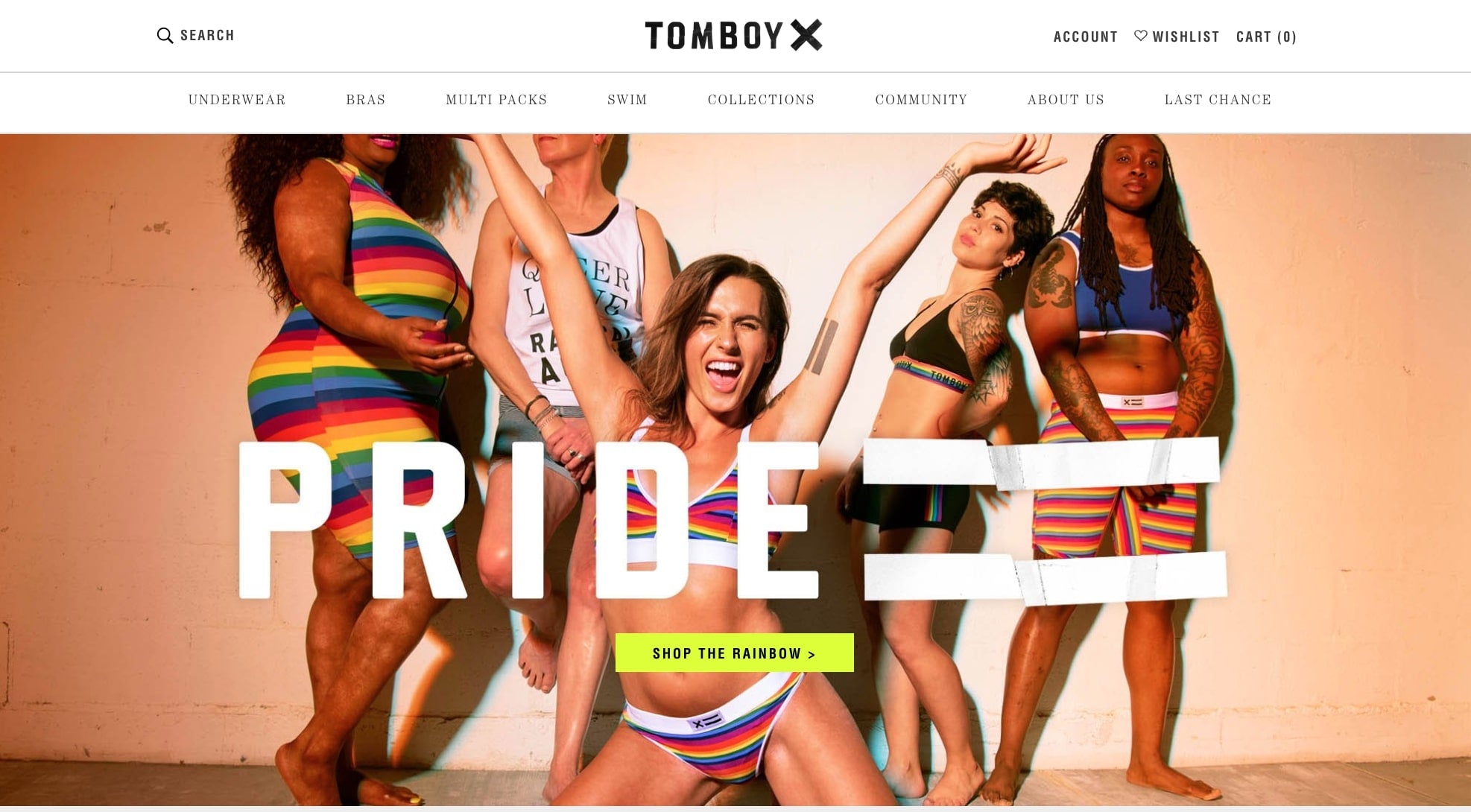
More niche product ideas for the LGBTQ+ community
- Makeup specifically designed for certain skin types
- Pride-inspired designs
- Clothing made for certain body types
4. Travelers
Online sales in the travel industry increased by more than 10% in 2018, amounting to $694.41 billion spent. Coupled with the declining cost of air travel over the last three decades, a more mobile consumer means tons of niche audiences to tap into, from the frequent business traveler to the remote worker struck with wanderlust.
Even the way consumers approach traveling is evolving. In fact, travelers are becoming more environmentally conscious. According to Booking.com, more than half seek sustainable options but have difficulty finding them.
This gap represents a massive opportunity for brands to step up to the plate and support eco-friendly initiatives through sustainable products. And travelers are seeking more than just green options. They also look for authentic local experiences, convenience, and long-term trips.
CNN reports that by 2020, nearly half the UK and U.S. workforce will be freelance, and at least 40% more children were home-schooled in 2017 than in 2014. This opens the doors to longer, more immersive trips, especially for remote workers who leverage their flexible careers to see the world.
Nomatic is a luggage brand geared towards travelers, but especially digital nomads that prioritize functionality. You can see this audience focus represented across their entire business, from their product to their copywriting.
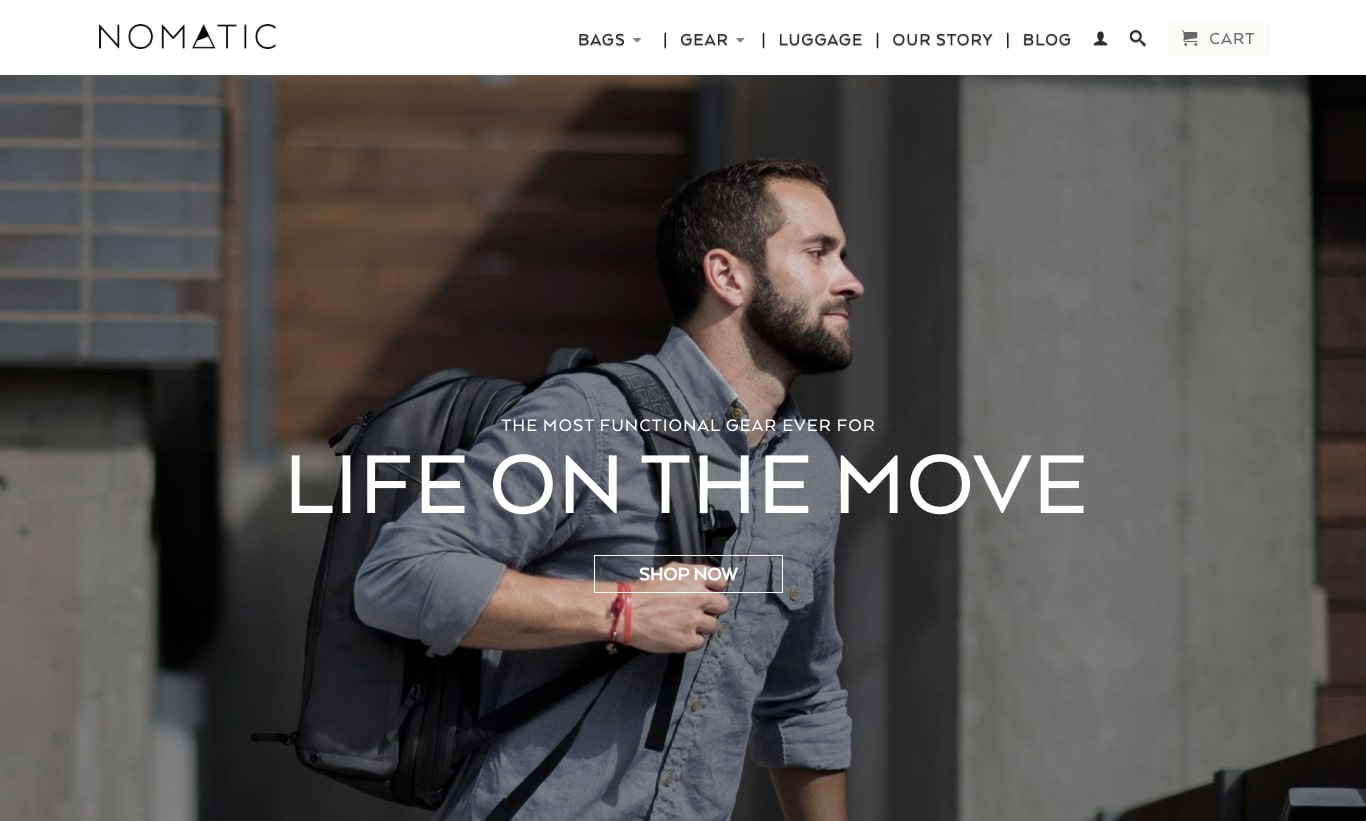
More niche product ideas for avid travelers
- Smartphone accessories for traveling content creators
- Practical and comfortable athleisure for frequent flyers
- Scratch maps for people who love collecting travel experiences
5. Gamers
“Gamers” is a catch-all term that contains a variety of subsets: mobile gamers, PC gamers, console gamers, table-top gamers—the list goes on. There are more than 2.3 billion active gamers across the globe, and nearly half spend money on their hobby, amounting to an industry worth $137.9 billion in 2018.
Shazim Mohammad launched his online store, Glorious PC Gaming Race, with products specifically aimed at PC gamers. It’s become a 7-figure business that basically runs on auto-pilot.

Mobile gaming, in particular, is taking over, accounting for 91% of the market. Plus, more females are entering the market than ever before, a trend which doesn’t show any signs of slowing down.
Within this category, you can also niche down based on popular genres (like first-person shooters), or consoles (like the Nintendo Switch).
More niche product ideas for gamers
- Ergonomic products for long gaming sessions (controllers, chairs, blue-light blocking glasses)
- Decals to personalize consoles, controllers, etc.
- T-shirts referencing aspects of gamer culture
- Accessories for mobile gamers
6. Homeowners
Home ownership is changing. What used to be the norm is no longer the case, and the percentage of U.S. consumers who also own homes is decreasing. There are many reasons for this, such as the rise in the cost of living and salaries that can’t keep up.
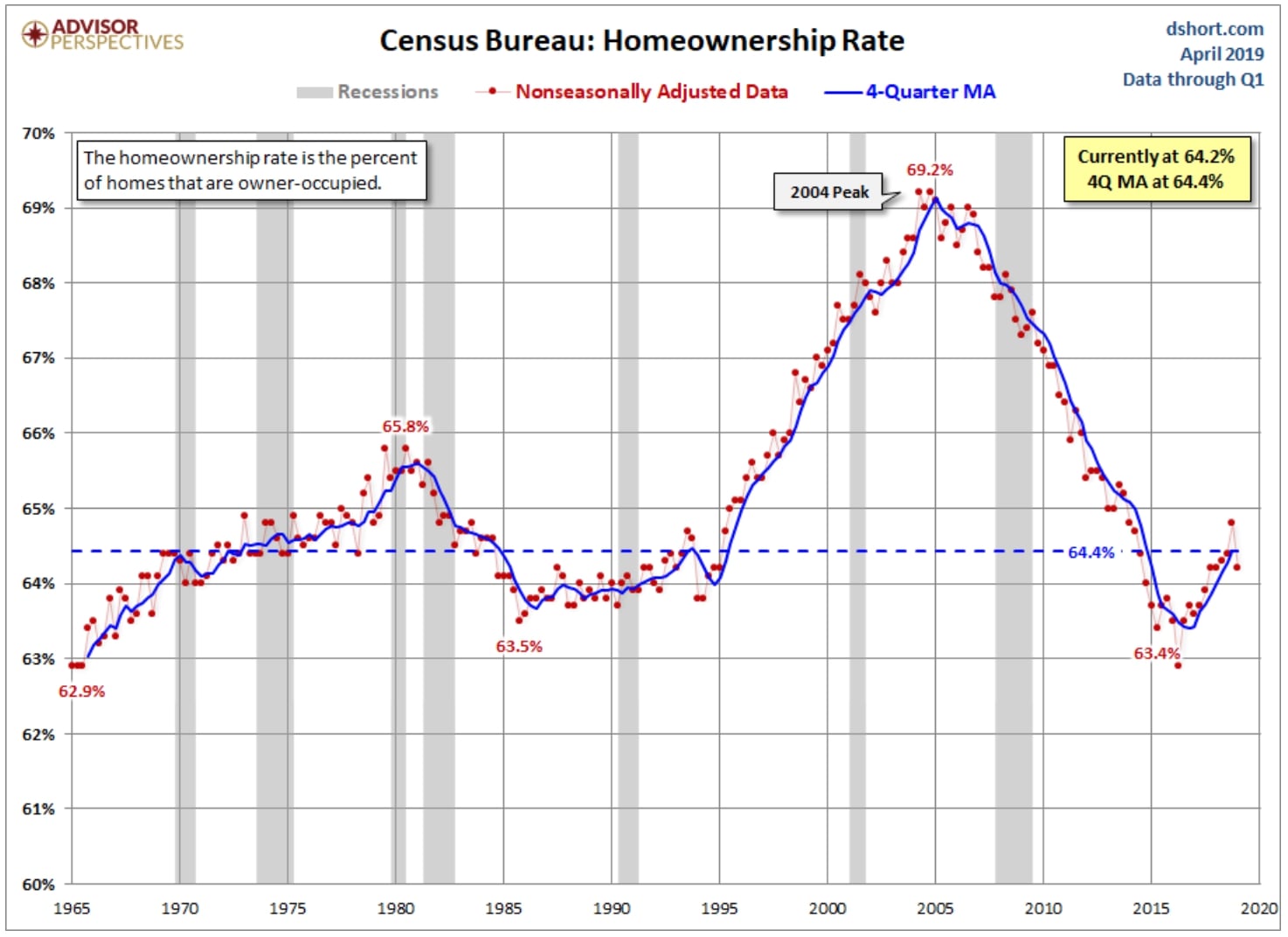
As such, not only is home ownership on the decline, but the definition of being a homeowner is also changing. Homes are increasingly being turned into investment properties or shared spaces which generate additional passive income thanks to the advent of home sharing via Airbnb and VRBO.
This paved the way for August to launch its own line of keyless entry and home security products for homeowners. One of the main features is guest access, allowing hosts to grant access to renters for specified time periods.
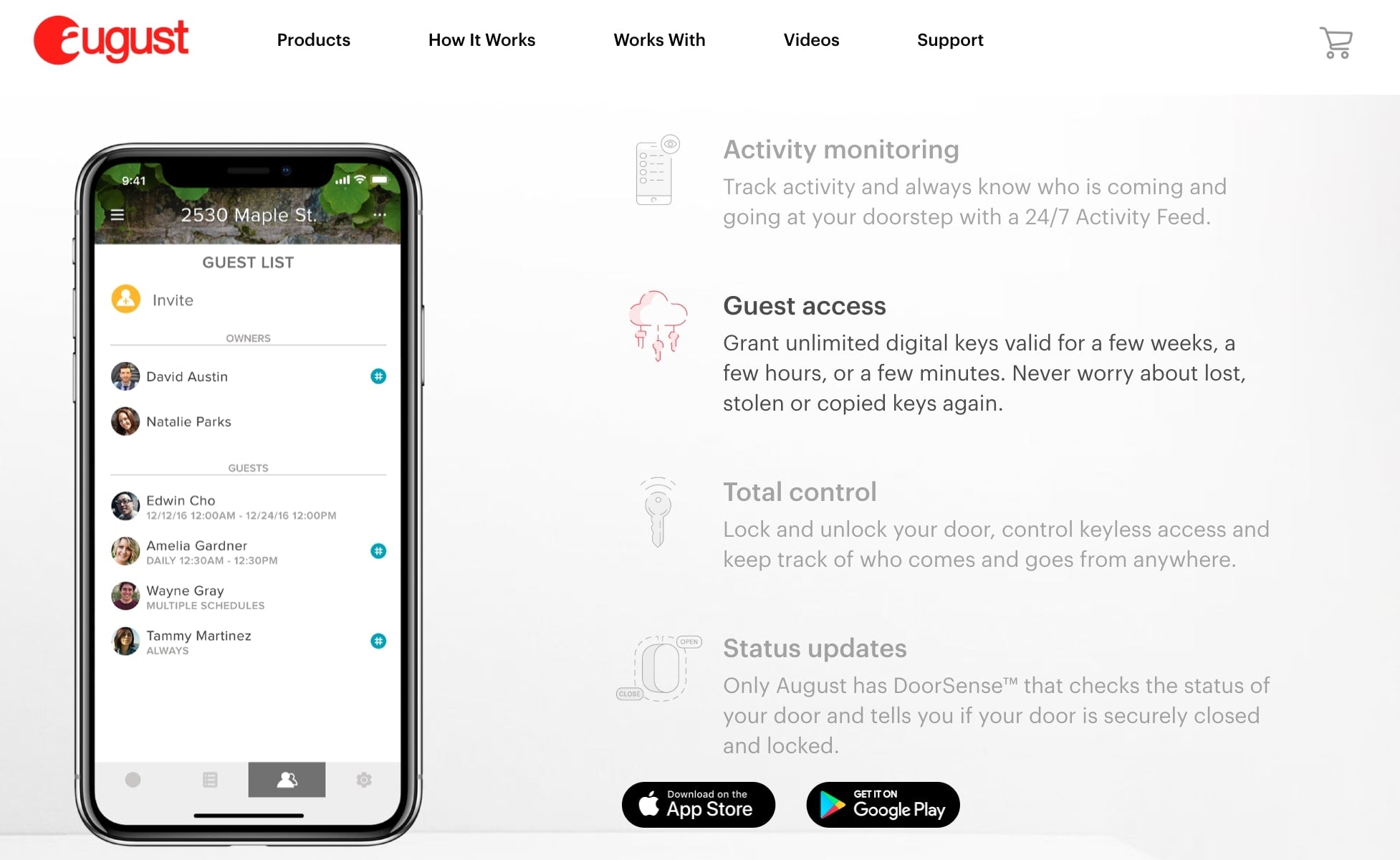
More niche product ideas for homeowners
- Home security cameras (in-home, doorbell, smart home devices, etc.)
- Furniture/home decor for small apartments
- Home solutions for renters (such as no-drill blinds)
7. Remote workers
The rise of remote workers is largely thanks to two influences: more self-employed contractors and more companies open to the idea of dispersed teams.
There are many reasons for this. For one, allowing employees to work remotely increases job satisfaction and productivity. These workers are also more engaged and two times more likely to work more than 40 hours a week. And those who go the self-employed route are typically seeking more freedom and a better work-life harmony.
Freelancer At Work is an example of a company serving this niche market of freelancers with products that can help attract potential clients. They sell laptop decals that advertise what you do wherever you choose to work.

Keeping these remote workers’ motivations and lifestyles in mind can help you identify product ideas to help them and the companies that employ them to achieve their goals.
More niche product ideas for remote workers
- Desk toys/decorations
- Decor for home offices
- Laptop accessories for people who like coffee shop work sessions
8. Locals
Even the world’s biggest brands are adopting local marketing approaches through targeted campaigns. And rightfully so: They’re competing with a consumer-driven movement to support local businesses.
But if you’re only selling online, it can be difficult to establish a local presence. Luckily, there are ways for ecommerce sellers to get in on the movement by looking at their city or country as a niche market.
Apparel company Peace Collective, for example, was founded in Toronto and around Toronto pride. The brand has expanded to appeal to Canadians nationwide and to fans of various NBA teams.

More niche product ideas for locals
- T-shirts with slogans specific to a culture or city
- Prints/photobooks of a certain cityscape
How to find your own niche markets in 2019
For both new and established ecommerce entrepreneurs looking for a niche market and product to sell, you’ll first need to establish an overview of the larger market and drill down from there. Your niche will be a subset of that market and will help define everything from:
- The product features you aim at your market's needs
- The price range for your products
- Production quality
- Your positioning/branding
- Your marketing strategy
Choosing a niche gives your online business a competitive edge from the get-go. If you try to launch your online store in a crowded product category or market, you're going to face a tough uphill battle against the established competition. Focusing on a niche helps you compete not by selling different products necessarily, but by doubling down on a specific part of the market.
Although there's no single way to choose a niche, there are many methods you can employ. From simple Google searches, to building a mind map to using keyword research to help uncover great niches, there are many ways to build a list of possible niches and find product ideas.
Start with Google searches
The best place to start brainstorming niche ideas is to understand what other online retailers are selling in a product category or to a certain audience. Starting your niche selection with basic Google searches is a great way to get the lay of the land. Let’s use “cruelty-free makeup” as a starting point; from there, we’re able to find a goldmine of potential angles and rabbit holes to go down, from “vegan skincare” to “not tested on animals”.
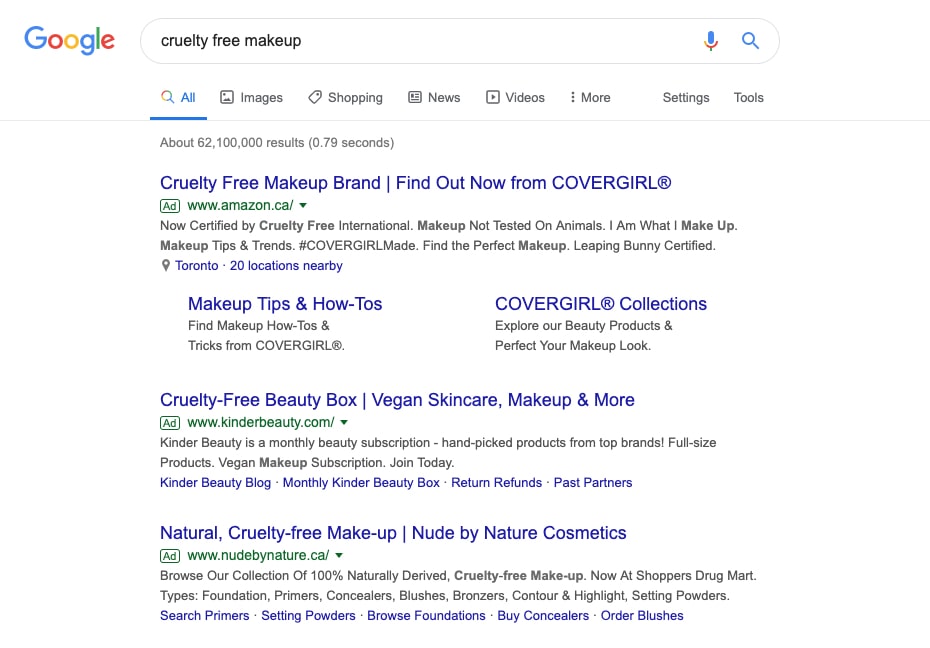
Through trial and error, you can explore different angles and trends, until you find an underserved audience or demand in the market. Keep in mind that even if a competitor is targeting your niche, you can still compete by doubling down on a more specific segment of that audience. Remember: It's about being a specialist, not a generalist.
Build a mind map
A mind map is a great way to discover niches for your chosen product. Since mind maps mimic the way our brains think, they’re an intuitive way to organize your thoughts and expand on ideas. Building a mind map for your product idea can generate ideas quickly while also encouraging you to explore different niche paths. You can use a free online tool like Text2MindMap to create a simple but effective mind map.
Here's what we came up with for our cruelty-free product idea:

Use Google’s suggestions
Ever notice how when you start typing something into a Google search, it shows you suggestions before you even finish typing your query? These are Google’s most-searched-for related queries, which you can use to your advantage to find a niche for your product category.

Google will only show you a few suggestions, so you may want to use tools like Keyword Tool or Answer the Public to gather and organize all of Google’s suggested searches.
We plugged in "cruelty-free" which returned suggestions we could pull a potential niche from. Here's a small sample of the results:

Drill down with keyword research
This next method for uncovering a niche uses Google's Keyword Planner tool. Keyword Planner is a resource from Google's advertising platform, Google Ads. The Google Keyword Planner is similar to the Google suggestion tool we discussed above but more advanced and customizable.
To use this tool you need to have a Google Ads account (you can sign up for free). Log in to your account and select Tools from the top menu (it’s the wrench icon) and select Keyword Planner.
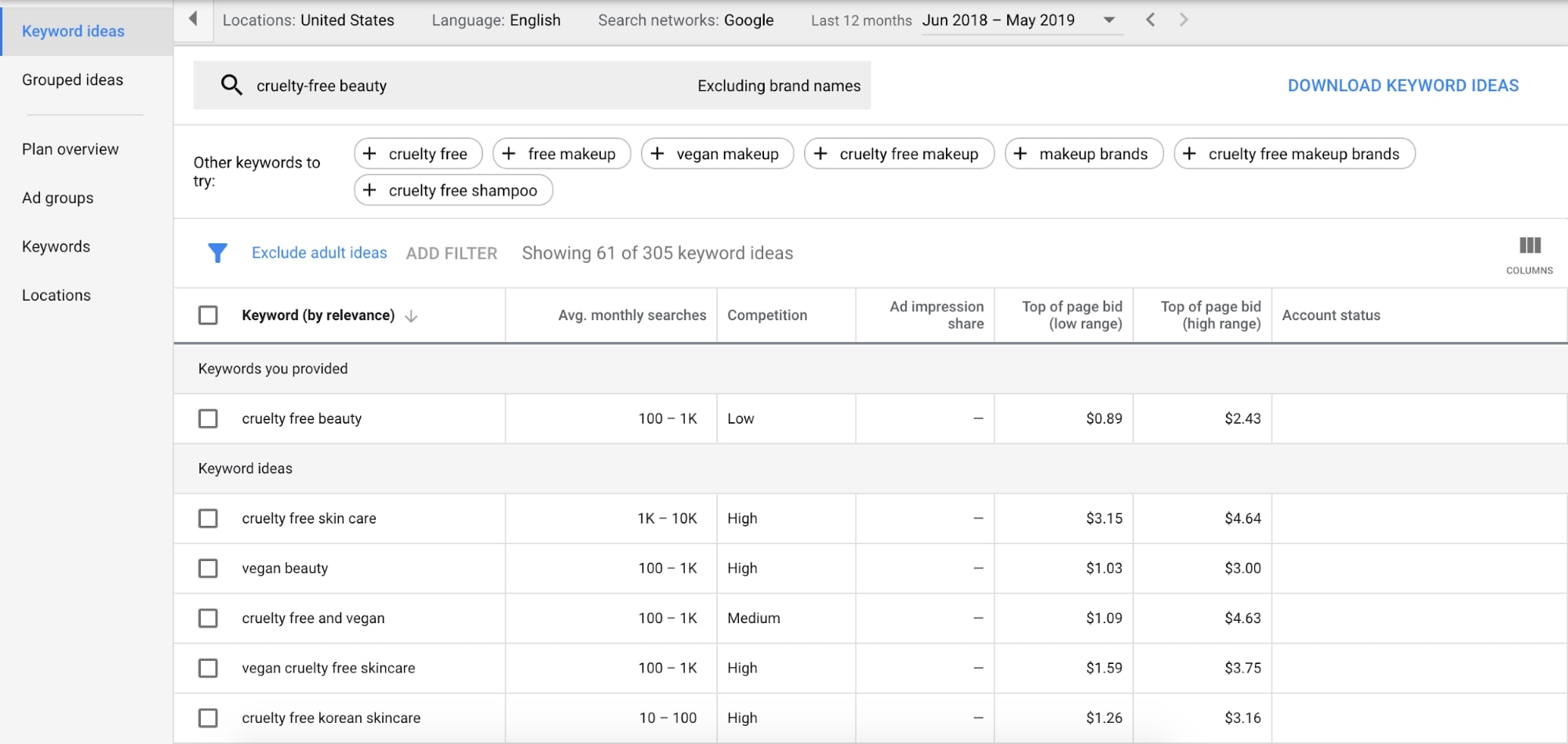
Enter your main niche idea and see your results. You can adjust your location settings on the left to make sure you’re targeting areas you want to reach. You can also add filters, remove branded keywords, and see suggestions for other recommended terms to look into.
Searching through these results can give you a good idea of potential niches related to your original search term, and sometimes even the demand for specific popular products you might want to consider. Don't be afraid to dive deeper and try a variety of related search terms.
Alternatively, you can use the Keywords Everywhere browser extension to see search volume directly under your Google searches, if you don’t have a Google Ads account.
Look for passionate communities online
The internet is pretty good at organizing itself into communities based on shared interests, passions, and hobbies—in other words, into niches.
You can consider specific communities that you yourself belong to or hunt for ones that show promise by:
- Sifting through the most visited Wikipedia pages under "hobbies"
- Digging through the most active subreddits to look for passionate audiences and listening in on their discussions
- "Listening" to community-oriented hashtags on Instagram and Twitter, like #vegansofig and #vegancommunity to find opportunities to niche down.
Shopify Academy Course: How to Get Started on Shopify
Looking for a guided tour of Shopify? Merchant Success Manager and entrepreneur, Samantha Renée, shares steps to customizing your shop, adding a product and making your first sale.
Enroll for freeHow to evaluate your niche market ideas
Now that you know what to sell online, you need to make sure there’s an audience for it. At the start, your niche market and products are just ideas—a hypothesis of what you think will resonate with your target audience.
While targeting a niche as your focus will make it infinitely easier to find potential customers and convince them to buy from you, you need to be sure there are enough buyers in that niche to make it viable. If you determine your niche is too small to generate reasonable interest and profit, consider pivoting to a different audience within that niche or promoting a different product. You won’t really know what will resonate until you try.
Even if you do achieve success early on, niches change and it’s up to you to evolve with your audience and adjust your positioning over time. You might even introduce new products to your line as new opportunities present themselves.
Here are some ways to evaluate your niche market idea:
- Build your audience first. Kickstarter campaigns generate buzz and awareness about products before they’re even developed. While this may not be the route for you, you can still introduce your idea and gain followers before the idea has come to fruition through email opt-in pages, social media campaigns, and other online tactics. This way, you’ll have an engaged group of potential customers ready and waiting for when you do launch.
- Test before you invest. Start with a small batch of products and run a campaign to your targeted audience. Solicit feedback from customers who’ve made the first purchases, or send a few out to influencers and ask them what they think. It’s important to get feedback early on, especially if you’re developing a new product, so you can perfect it before it goes out to the rest of the world.
- Dig deeper into your niche. You already did the keyword research to identify your niche market, but you can go even more in-depth. Analyze blogs, social media, influencers, and other key areas in your niche to gain insights. Can you solve a problem that repeatedly comes up?
- Research consumer trends in your market. It’s important to be up-to-date with what’s happening in your chosen niche. Resources like Facebook IQ, Think with Google, and Nielsen consumer research will help you understand consumer pain points, desires, and breakout trends. Set up Google Alerts for related keywords and regularly monitor social media conversations to stay on top of what’s trending.
When it’s time to actually market your product, remember to hone in on your specific audience’s needs and commonalities. What makes this niche market different from the broader market, and how can you appeal specifically to their wants, needs, and preferences?
Handbags offer a huge market, for example, and there are many niches with many different uses for a handbag within it. You might have new moms who want a handbag that can be used as a diaper bag, you might have college students who need a bag to hold their books, single women in need of an evening bag to hold their phone, keys, and credit cards, vacationing moms who want a large beach bag to hold their family’s gear, and many more.
Understanding the unique needs of each niche makes it possible to speak directly to them in your marketing—you’ll have a greater chance of attracting a buyer’s attention and winning their business by making it clear that your product is specifically for them.
Moving forward with your niche market opportunity
Now that you know how to choose a niche market and generate product ideas your target audience will buy, it’s time to turn it into a reality. Here are a few resources to get started, whether you plan to make it yourself, work with a manufacturer, or dropship:
- How to Develop a New Product (From Concept to Market)
- How to Find a Manufacturer or Supplier for Your Product Idea
- 12 Shopify Apps for Finding Products to Sell (Without Shipping Them Yourself)
- 10 Print-On-Demand Companies for Selling Your Own Custom Products
Which products or trends have you noticed lately? What would you add to this list? Let us know in the comments below.

